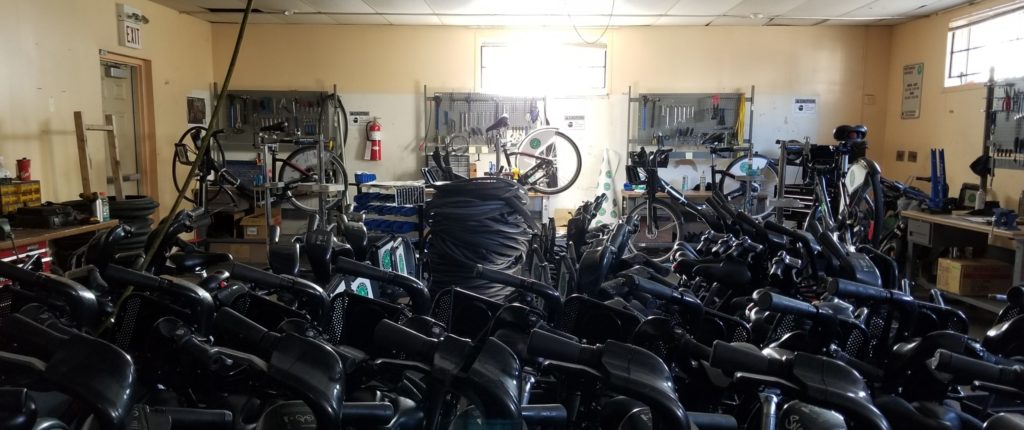During my second year of mechanical engineering, I had learned various mechanical concepts related to design, machining, and manufacturing. Many of these topics had been taught in class, but by the end of the academic year, I wanted to continue developing and applying those concepts learned from school to the real-world with a strong hands-on approach.
From the beginning of June 2018 to May 2019, I worked as a bike mechanic at Shift Transit, operator of Bike Share Toronto – a city wide bicycle sharing system. My responsibility was to repair and maintain the fleet of bicycles, report my progress through a data-entry network to the Operations Manager, assist in the ordering and receiving of parts inventory, and maintain a safe work space.


To perform these repairs, different tools are used by hand, such as various wrenches to free or tighten bolts, drills to cut new holes, truing stand to true bent wheels, angle grinder to cut away old pedals, and Dremel to cut a notch on seized bolts, all done with appropriate safety precautions. By learning how to use these tools hands-on, I was able to intuitively learn the techniques that go into repairing and fine-tuning mechanical components.
Working for Bike Share Toronto as a bike mechanic was a fantastic experience. Not only was the work environment a positive and involving space to develop one’s thinking and technical problem solving skills, but also a place of strong friendship, community, and comradery amongst the mechanics and other employees. It was a space of high level collaboration, teamwork, and communication – all well utilized to come up with creative ways of addressing challenging and unique mechanical problems with the bikes.

But in the end, having the shop speakers turned up to 11 and jamming out to our favourite artists while hammering away on the bikes was what made this whole experience truly a memorable one for me.

